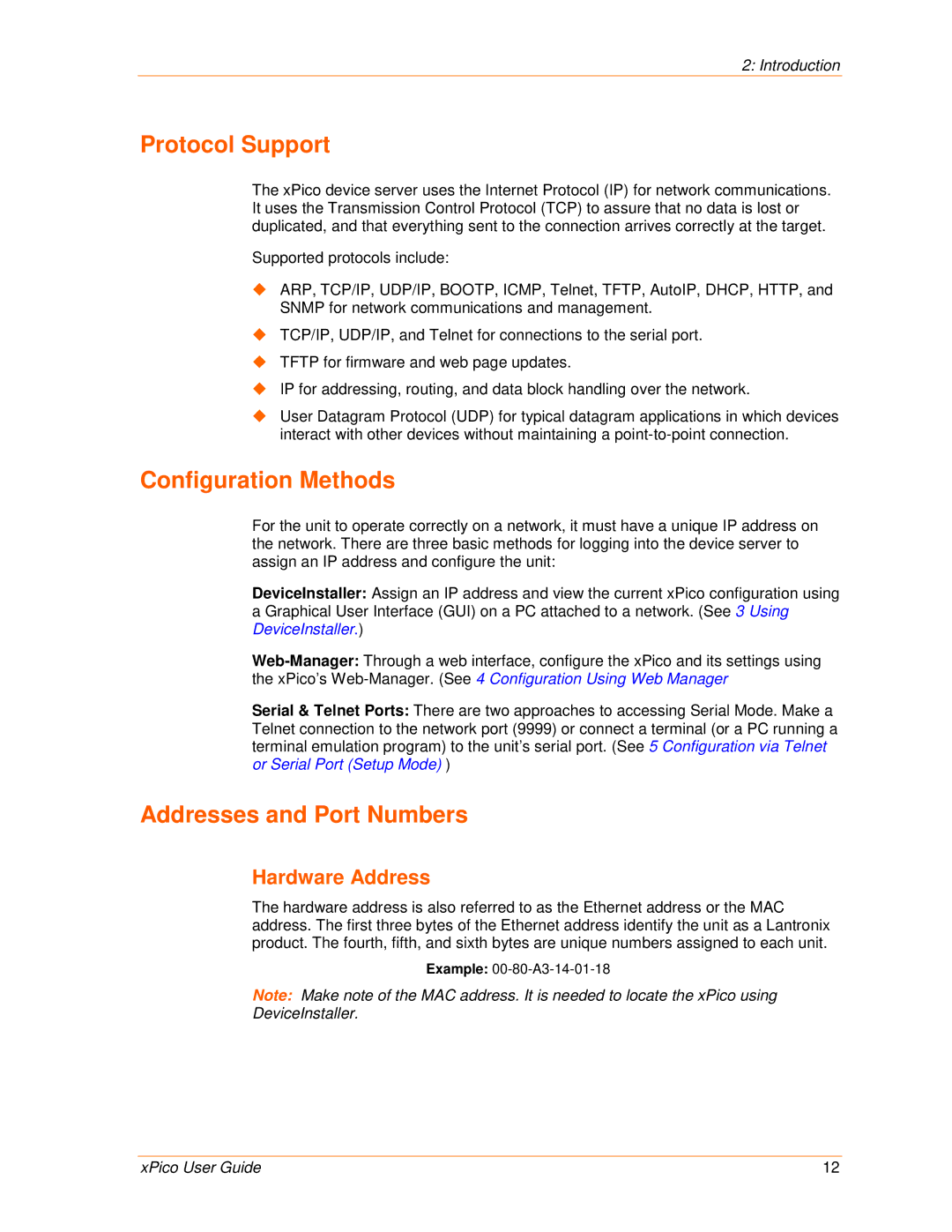2: Introduction
Protocol Support
The xPico device server uses the Internet Protocol (IP) for network communications. It uses the Transmission Control Protocol (TCP) to assure that no data is lost or duplicated, and that everything sent to the connection arrives correctly at the target.
Supported protocols include:
ARP, TCP/IP, UDP/IP, BOOTP, ICMP, Telnet, TFTP, AutoIP, DHCP, HTTP, and SNMP for network communications and management.
TCP/IP, UDP/IP, and Telnet for connections to the serial port.
TFTP for firmware and web page updates.
IP for addressing, routing, and data block handling over the network.
User Datagram Protocol (UDP) for typical datagram applications in which devices interact with other devices without maintaining a
Configuration Methods
For the unit to operate correctly on a network, it must have a unique IP address on the network. There are three basic methods for logging into the device server to assign an IP address and configure the unit:
DeviceInstaller: Assign an IP address and view the current xPico configuration using a Graphical User Interface (GUI) on a PC attached to a network. (See 3 Using DeviceInstaller.)
Serial & Telnet Ports: There are two approaches to accessing Serial Mode. Make a Telnet connection to the network port (9999) or connect a terminal (or a PC running a terminal emulation program) to the unit’s serial port. (See 5 Configuration via Telnet or Serial Port (Setup Mode) )
Addresses and Port Numbers
Hardware Address
The hardware address is also referred to as the Ethernet address or the MAC address. The first three bytes of the Ethernet address identify the unit as a Lantronix product. The fourth, fifth, and sixth bytes are unique numbers assigned to each unit.
Example:
Note: Make note of the MAC address. It is needed to locate the xPico using
DeviceInstaller.
xPico User Guide | 12 |
